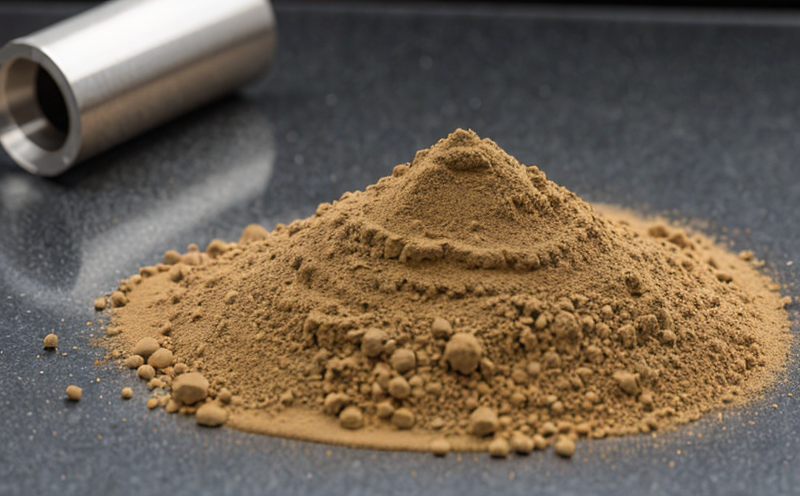ISO 178 Flexural Properties Testing of Raw Polymers
The ISO 178 flexural properties testing method is a fundamental tool in the characterization of raw polymers within the additive manufacturing and 3D printing sectors. This test evaluates how a polymer behaves under stress, specifically focusing on its resistance to bending before failure occurs. Understanding these properties is crucial for ensuring that raw materials meet quality standards required for successful 3D printing processes.
The testing procedure involves preparing standard-sized specimens from the raw polymer and subjecting them to controlled loads until they bend past a certain point of deflection, which marks their ultimate flexural strength. The results provide critical data on the material's mechanical integrity—a key factor in predicting its performance during manufacturing. This information is vital for quality managers to ensure that purchased materials are suitable for production use.
Accurate testing not only supports compliance with international standards but also enhances product development through informed decision-making by R&D engineers. For procurement teams, this ensures they acquire the best-suited raw materials at optimal cost-efficiency levels while maintaining high-quality output.
The ISO 178 method is widely recognized for its reliability and precision in assessing flexural properties across various polymer types. The test setup typically includes a universal testing machine capable of applying controlled loads, alongside calibrated fixtures designed to hold specimens accurately during the bending process.
Specimens used are usually small rectangles cut from raw granules or pellets, ensuring consistency with international standards like ISO 178:2003. Specimen dimensions must adhere strictly to specified tolerances; otherwise, results may not be comparable between different laboratories or tests. Post-test analysis involves measuring the maximum load applied before failure and recording any deformation data.
Testing under these controlled conditions helps identify potential issues early in the supply chain, allowing for corrective actions if necessary. This proactive approach ensures that only high-quality materials proceed further into manufacturing processes such as 3D printing.
The significance of ISO 178 flexural properties testing extends beyond mere compliance; it plays a pivotal role in advancing technology and innovation within additive manufacturing and 3D printing industries. By leveraging detailed insights gained from this testing, companies can optimize their production methods leading to more efficient processes and ultimately better products.
For instance, understanding how raw polymers behave under stress allows manufacturers to design stronger parts with optimal geometries tailored specifically for additive manufacturing applications. Additionally, knowing the exact flexural properties helps in selecting suitable binders or fillers during composite material development—a crucial step towards creating advanced materials capable of meeting diverse industrial demands.
In summary, ISO 178 flexural properties testing offers essential information about raw polymer performance that is indispensable for achieving consistent quality across additive manufacturing projects. Its application ensures both regulatory compliance and technological advancement by providing accurate data needed throughout the entire supply chain process—from procurement to final product delivery.
Frequently Asked Questions
Customer Impact and Satisfaction
Implementing ISO 178 flexural properties testing has a profound impact on customer satisfaction within the additive manufacturing sector by ensuring consistent quality across all products. By providing accurate data on raw polymer behavior, this test allows manufacturers to make informed decisions regarding material selection, thereby enhancing product performance.
- Enhanced confidence in purchased materials
- Increased trust between suppliers and buyers
- Prompt identification of non-compliant materials leading to reduced waste and rework
Customers benefit from more reliable raw materials which translate directly into higher-quality end products. This not only improves customer satisfaction but also fosters long-term relationships based on mutual respect and shared goals.
Environmental and Sustainability Contributions
Incorporating ISO 178 flexural properties testing into the procurement process supports environmental sustainability initiatives by promoting responsible sourcing practices. By ensuring that only high-quality, compliant raw materials are used in production processes, companies contribute positively to reducing waste associated with substandard products.
- Minimized resource consumption through efficient material usage
- Promotion of circular economy principles by reusing and recycling compliant materials
- Incentivizing suppliers to adopt greener practices leading to reduced carbon footprints
The commitment to sustainable sourcing practices aligns with global efforts towards reducing environmental impact, making ISO 178 testing an integral part of any responsible manufacturing strategy.
Competitive Advantage and Market Impact
By leveraging the detailed insights provided by ISO 178 flexural properties testing, organizations gain a significant competitive edge in their respective markets. Accurate characterization of raw polymers enables informed decisions that lead to optimized production processes resulting in superior product quality.
- Enhanced reputation among clients and partners due to consistent high-quality output
- Ability to anticipate market trends by identifying emerging material properties early on
- Possibility for innovation through continuous improvement of existing products or introduction of new ones based on tested data
This competitive advantage translates into increased sales, customer loyalty, and overall market leadership. In today’s fast-paced industry landscape, staying ahead of the curve with reliable testing methods is key to maintaining a strong foothold in the marketplace.





